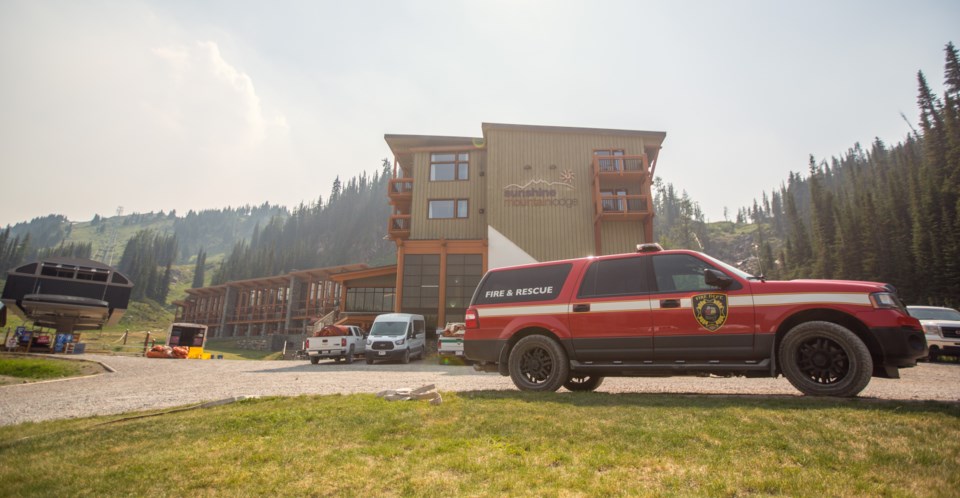BANFF – Parks Canada is busily preparing behind the scenes for a potentially big wildfire season.
At the same time, the federal agency has extinguished its plans for prescribed fires across the country, including in Banff National Park, in the face of the COVID-19 pandemic.
“Because COVID-19 is a respiratory illness, we have suspended all burning within Parks Canada, including our prescribed fire program,” said Jane Park, fire and vegetation specialist for Banff National Park.
“This is also to minimize the usage of what could potentially be limited resources, which are firefighters and aircraft and things like that.”
Wildfires are already burning in neighbouring B.C., including a 203-hectare fire that is currently being held near Squamish.
According to BC Wildfire Service, there have been 69 small wildfires since April 1, burning a total of 519 hectares – three of which were human caused. Alberta has seen eight small wildfires so far, all contained or out.
Canadian Wildland Fire Information System, which provides information on fire danger conditions and fire occurrences, predicts this summer’s fire season is potentially above normal, with June predicted to be well above normal for much of Alberta and B.C..
“Right now, for June, it’s fairly red,” said Park.
“To that end, we are trying to mitigate as much as possible the potential for human ignition and for our resources not to be overloaded this fire season.”
Banff residents have been on alert at various times over the years, most recently during the 2017 Verdant Creek fire, which forced evacuation of Sunshine Village Ski Resort and Kootenay Park Lodge.
Spring has come a little later this year, with snow still covering the valley bottoms in much of the national park.
“We’re at just over nine per cent more precipitation over the fall and winter than the last several years,” said Park.
“This does help in terms of keeping the ground moist. We also haven’t had that many Chinooks, so there’s a lot more snow hanging around longer than normal.”
With warmer weather and temperatures hitting double digits this week, Park said the spring fire hazard is when grasses dry in the valley bottoms.
She said Parks Canada will continue working with the Town of Banff on wildfire preparedness, as well as with neighbouring communities.
“We want to make sure residents know, that even though you don’t see us out there, that all that wildfire preparedness is still going on,” she said.
As with many public agencies, Parks Canada has been preparing protocols within the fire program to reduce the risk to firefighters and other workers during the COVID-19 pandemic.
“We have to make sure we are safe from COVID throughout the fire management season,” Park said.
Meanwhile, Parks Canada’s decision to postpone its prescribed fire program will be adapted as health authorities provide more guidance as the COVID-19 situation evolves.
Banff National Park had three prescribed fires on the books this year, scheduled to go in spring and fall.
A 6,800-ha burn in the Dormer Valley, about 45 km north of the Banff townsite on the eastern boundary of the park, and a 1,700-ha prescribed burn in the Cascade Valley in the Stoney-Flint’s area, both aimed to improve wildlife habitat.
In addition, there is ongoing fire work at Moose Meadows aimed at improving wildlife habitat, but also to help reinforce a firebreak in the middle Bow Valley between Banff and Lake Louise.
“We are obviously prepared to conduct them if that is something Parks Canada proceeds with, but right now we will be doing a lot of planning for future prescribed fires as well,” said Park.
“Obviously, we still think prescribed fire is one of the key ways we can improve resilience to climate change and a number of different other things such as wildlife habitat improvement.”
Last week, the Alberta government announced plans to spend $5 million on hiring 200 more firefighters. More than 800 seasonal firefighters will join 370 year-round staff at Alberta Wildfire.
In addition, a fire ban has been implemented in the province’s forest protection areas and provincial parks and protected areas. Fines are being doubled from $300 to $600 for those caught ignoring a fire ban.
Last year, more than one million acres burned across Alberta – and 71 per cent of wildfires were human-caused. More than $600 million was spent fighting wildfires throughout the province in 2019.
There is currently no fire ban in Banff National Park, but Park said it remains one possible tool as the fire season advances.
“There are very few places within Banff that people can have a legal fire,” she said, noting fires are only allowed in designated fire pits in the park.
“Normally they are allowed in campgrounds, which are closed, and very limited day use areas that are inaccessible to vehicles.”
Park said the public is asked to consider the implications of illegal fires.
“We have to consider the safety of responders as well as the public,” she said.
Follow RMOToday.com's COVID-19 special section for the latest local and national news on the coronavirus pandemic, as well as resources, FAQs and more.


